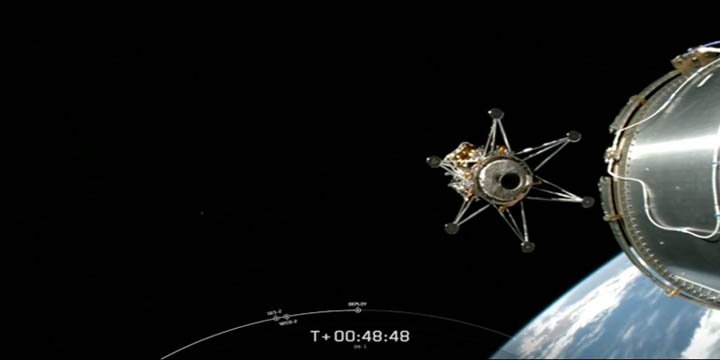First moon-landing by private company: What it means for lunar exploration
Context- On February 23, a US-made spacecraft named Odysseus, built by Intuitive Machines, landed on the Moon. This marked the arrival of private space companies on the lunar surface, 52 years after the last successful Apollo mission. The spacecraft, which took off from Earth on February 15 using a SpaceX Falcon 9 rocket, carried six NASA payloads. The lander module of Odysseus, Nova-C, is the second to land in the Moon’s south pole region after Chandrayaan-3 last year. This event is the third moon-landing within a year, following Chandrayaan-3 and Japan’s SLIM (Smart Lander for Investigating Moon).
New Beginnings
- The landing of the spacecraft Odysseus signifies a new era in lunar exploration, with the goal of establishing an infrastructure and technology ecosystem that can support long-term human presence.
- Unlike the moon landings of the 1960s and 1970s by the US and the Soviet Union, which were significant scientific events but lacked the technology to exploit lunar resources, this mission aims to build upon these achievements.
- The first moon landing by Luna 9 of the Soviet Union in 1966 and the first human landing on the Moon by Apollo 11 happened within a relatively short time after the dawn of the space age in 1957. However, the technology to utilize these milestones for long-term exploration and resource utilization was not yet developed.
- The recent landing is part of the US’s Artemis programme, which aims not just to land spacecraft or humans on the Moon, but to create the infrastructure and economy for more meaningful lunar exploration and even further space exploration.
- The Artemis programme heavily relies on the support of private and commercial space agencies. Through its Commercial Lunar Payload Services (CLPS) initiative, NASA collaborates with private companies to deliver equipment and technology to the Moon, fostering a sustainable economy around lunar journeys.
- This approach facilitates quicker missions, technology dispersion, capacity building, and a larger workforce dedicated to lunar projects.
Troubled start
- The first launch under NASA’s Commercial Lunar Payload Services (CLPS) initiative was by a company named Astrobotic. However, it encountered issues shortly after launch and failed to reach the Moon. Both the spacecraft and the rocket for that mission were provided by private companies, similar to the Odysseus mission.
- Odysseus marks the first successful mission under the CLPS initiative. NASA has contracted with 14 space companies for similar missions.
- At least six more lunar landings are planned by these companies by 2026, the year NASA aims to land the first humans on the Moon since the Apollo Missions. This includes another mission from Intuitive Machines scheduled for later this year.


